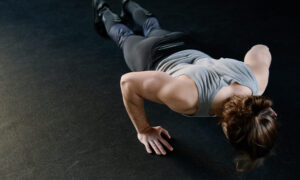How to Use an Elliptical Machine in 12 Tips

Using an elliptical machine is an effective way to get a low-impact cardiovascular workout while engaging multiple muscle groups in your body. Here’s a detailed guide on how to use an elliptical machine:
1) Warm-Up
Before getting on the elliptical, perform a brief warm-up by moving your arms and legs gently for 5-10 minutes. This helps increase blood flow and reduces the risk of injury.
2) Start the Machine
- Step onto the pedals of the elliptical machine, one foot on each pedal.
- Grasp the handles firmly, ensuring a comfortable grip.
- Some ellipticals have a power button, while others start when you begin pedaling. Follow the instructions specific to your machine to activate it.
3) Posture
Maintain proper posture to prevent strain and ensure an effective workout:
- Stand up straight with your head in line with your spine.
- Keep your shoulders relaxed.
- Engage your core muscles by slightly tucking in your abdominal area.
- Hold onto the handles, but avoid leaning too much on them.
4) Adjust Resistance and Incline
Most elliptical machines offer adjustable resistance and incline settings. These settings allow you to customize your workout:
- Resistance: Start with a low resistance level, especially if you’re new to elliptical training. As you become more comfortable, gradually increase the resistance to make your workout more challenging.
- Incline: Some ellipticals have adjustable incline settings, which mimic hill climbing. Adjust the incline to target different muscle groups and add variety to your workout.
5) Pedaling Technique
- Begin pedaling in a smooth and controlled manner, pushing your feet forward and down.
- Use the handles to engage your upper body. The handles can move back and forth or remain stationary, depending on the machine. Experiment with both options to see which feels more comfortable for you.
- Pedal forward for a few minutes, and then switch to pedaling backward to engage different muscle groups.
6) Workout Modes
Many ellipticals offer various workout modes, such as manual, interval, hill climb, or pre-programmed workouts. Choose a mode that aligns with your fitness goals. Interval workouts, for example, can help burn more calories and improve cardiovascular fitness.
7) Monitoring Metrics
Most ellipticals have a built-in display that shows essential workout metrics:
- Time: Keep track of how long you’ve been exercising.
- Distance: Measure the distance covered during your workout.
- Calories Burned: Estimate the number of calories you’ve burned.
- Heart Rate: Some ellipticals come with heart rate sensors on the handles. Monitoring your heart rate can help you stay within your target heart rate zone for effective cardiovascular training.
8) Maintain a Steady Pace
- Maintain a consistent pace throughout your workout to achieve the desired intensity. You should be able to carry on a conversation but still feel like you’re working.
- Gradually increase the intensity as you progress.
9) Cool Down
- Slow down your pace during the last 5-10 minutes of your workout to allow your heart rate to gradually return to its normal range.
- Continue moving your arms and legs at a lower intensity to cool down effectively.
10) Stretching
After your workout, take a few minutes to stretch your major muscle groups, including your legs, arms, chest, and back. Stretching can improve flexibility and reduce muscle soreness.
11) Hydration
Stay hydrated throughout your workout by having a water bottle within reach.
12) Clean and Maintain
After your workout, wipe down the machine to keep it clean and in good condition.
Using an elliptical machine is a fantastic way to improve cardiovascular fitness, burn calories, and engage both your upper and lower body muscles. Remember to start slowly, gradually increase the intensity, and listen to your body to ensure a safe and effective workout.



